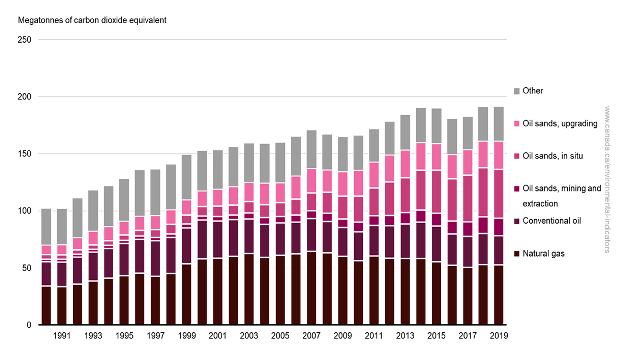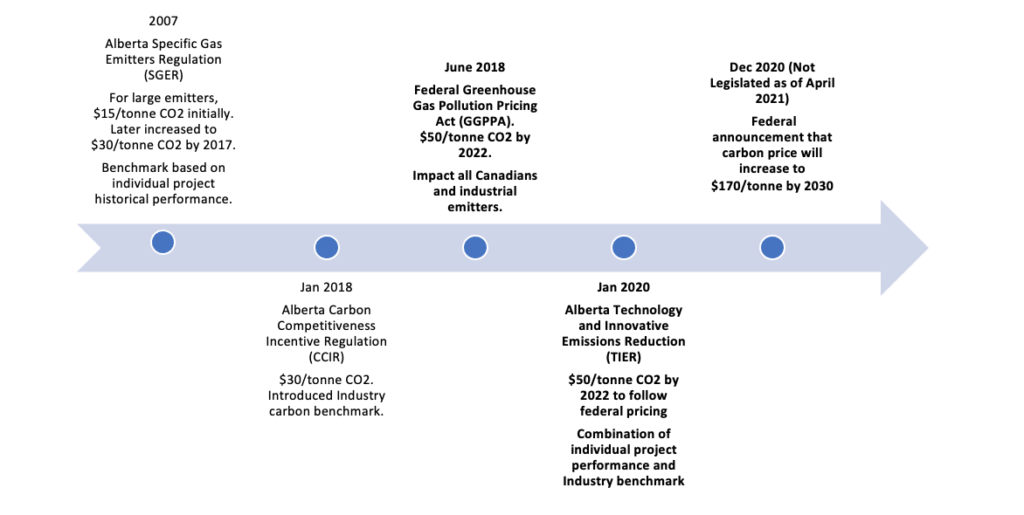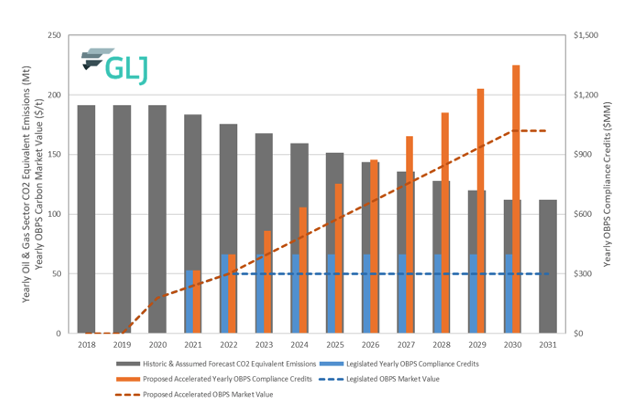Low-carbon hydrogen economy could also create thousands of jobs

Jillian Ambrose
Tue 17 Aug 2021
The government hopes to attract at least £4bn of investment to the hydrogen economy by 2030 under plans to produce the equivalent of enough hydrogen to replace fossil fuel gas for heating and cooking in about 3m households in the UK.
The government has published its long-awaited plans for a UK-wide hydrogen economy, which it says could be worth £900m and create more than 9,000 high-quality jobs by the end of the decade, rising to £13bn and 100,000 new jobs by 2050.
The strategy document lays out its efforts to attract investment in 5 gigawatts of hydrogen production by 2030, which would mostly power heavy industry, as well as transport and up to 70,000 homes. It suggests hydrogen could cover 20-35% of the UK’s energy consumption by 2050, providing a clean alternative to oil and gas in energy-intensive industries, power and transport
It proposes a series of industry consultations to help establish a subsidy system to support large hydrogen projects to decarbonise areas that cannot run on electricity.
However, the plans remain dogged by uncertainty over how the government will determine a fair subsidy for the multibillion-pound projects and whether the cost will be shouldered through household bills or by the Treasury. The government has promised more clarity after an industry consultation later this year.
Matthew Fell, the chief UK policy director at the CBI, said the strategy included important steps for the economy-wide hydrogen sector.
“However, to truly capitalise on those large-scale economic opportunities, and unlock the private sector finance needed, firms will now be looking for the government to provide detailed policies and standards for hydrogen production and application,” he said.
The hydrogen projects under development include “green hydrogen” schemes, which extract hydrogen from water, leaving only oxygen as a byproduct, and “blue hydrogen”, which extracts hydrogen from fossil fuel gas before trapping the greenhouse gas emissions that are left behind.
However, last week a study by academics at Cornell and Stanford universities in the US, warned that blue hydrogen could be up to 20% worse for the climate than fossil gas owing to the emissions that escape during its production, multiplied by the amount of gas required to make the equivalent amount of energy from hydrogen.
The government says it will set out emissions standards for blue hydrogen projects to ensure they capture enough greenhouse gas emissions during hydrogen production to qualify as “low carbon”, but many environmentalists and green energy producers have put pressure on the government to drop its support for blue hydrogen altogether.
The strategy paper does not set out a vision for the balance of blue and green hydrogen in the future, despite a clear instruction from its official climate advisers at the Committee on Climate Change (CCC) to include a pathway for each to 2035.
The CCC has supported plans for a “blue hydrogen bridge” to play a role in supplementing green hydrogen over the near-term because it could begin displacing fossil fuels sooner and at a greater scale than green hydrogen projects. However, critics of blue hydrogen fear a long-term commitment could extend the UK’s reliance on fossil fuels.
Doug Parr, the chief scientist for Greenpeace UK, warned that producing large quantities of hydrogen from fossil gas would lock the UK “into costly infrastructure that is expensive and … may be higher carbon than just burning the gas”.
Dan McGrail, the chief executive of RenewableUK, said the national strategy “doesn’t focus nearly enough on developing the UK’s world-leading green hydrogen industry” and should “set out a clear ambition for green hydrogen”.
“We’re urging the government to set a target of 5GW of renewable hydrogen electrolyser capacity by 2030 as well as setting out a roadmap to get us there, to show greater leadership on tackling climate change,” he said.
This article was amended on 17 August 2021. The government originally stated that the hydrogen production could replace fossil gas in about 3m UK households. It has since clarified that it was referring to the equivalent of current household fossil gas usage and that the hydrogen will predominantly be used by heavy industry.
Academics warn ‘fugitive’ emissions from producing hydrogen could be 20% worse for climate than using gas

Jillian Ambrose
Thu 12 Aug 2021
The government’s plan to replace fossil gas with “blue” hydrogen to help meet its climate targets could backfire after US academics found that it may lead to more emissions than using gas.
In some cases blue hydrogen, which is made from fossil gas, could be up to 20% worse for the climate than using gas in homes and heavy industry, owing to the emissions that escape when gas is extracted from the ground and split to produce hydrogen.
The process leaves a byproduct of carbon dioxide and methane, which fossil fuel companies plan to trap using carbon capture technology. However, even the most advanced schemes cannot capture all the emissions, leaving some to enter the atmosphere and contribute to global heating.
Professors from Cornell and Stanford universities calculated that these “fugitive” emissions from producing hydrogen could eclipse those associated with extracting and burning gas when multiplied by the amount of gas required to make an equivalent amount of energy from hydrogen.
Robert Howarth, a Cornell University professor and co-author of the study, said the research was the first to be published in a peer-reviewed journal to lay bare the “significant lifecycle emissions intensity of blue hydrogen”.
The paper, which will be published in Energy Science and Engineering, warned that blue hydrogen may be “a distraction” or “something that may delay needed action to truly decarbonise the global energy economy”.
The researchers recommended a focus on green hydrogen, which is made using renewable electricity to extract hydrogen from water, leaving only oxygen as a byproduct.
“This is a warning signal to governments that the only ‘clean’ hydrogen they should invest public funds in is truly net zero, green hydrogen made from wind and solar energy,” Howarth said.
A spokesperson for the UK government said hydrogen would be “essential for meeting our legally binding commitment to eliminating the UK’s contribution to climate change by 2050” and promised further details in the government’s forthcoming hydrogen strategy, which is expected next month.
“Independent reports, including that from the Climate Change Committee, show that a combination of blue and green hydrogen is consistent with reaching net zero but alongside the strategy, we will consult on a new UK standard for low-carbon hydrogen production to ensure the technologies we support make a real contribution to our goals,” the spokesperson said.
By Paul Rincon
Science editor, BBC News website
Published15 hours ago

Thousands of new jobs could be created by investing in low-carbon hydrogen fuel to power vehicles and heat homes, the government says.
Ministers have unveiled a strategy for kick-starting a hydrogen industry, which they say could attract billions of pounds in investment.
Business Secretary Kwasi Kwarteng said the fuel was also essential for UK efforts to reach net zero emissions.
He said it had the potential to provide a third of UK energy in future.
Because of the current higher cost involved in producing hydrogen compared to existing fuels, subsidies have been proposed to overcome the gap. The government has launched a consultation on this plan.
Labour also backs hydrogen's potential, but said the government had failed to invest as much as other countries.
Using hydrogen gas as a fuel produces no carbon dioxide (CO2) pollution. It can be used to power fuel cells - devices that generate electricity through an electrochemical reaction - used in a turbine for electricity or burned in a boiler and vehicle engine.
As such, it is a low-carbon, versatile fuel that can be used by cars, trucks and trains, heat our homes and generate the power needed for industrial processes such as steel production.
Is the hydrogen tech 'revolution' hope or hype?
Can hydrogen fuel help drive towards green future?
The government plans to deliver 5GW of hydrogen production capacity by 2030, estimating that the industry could be worth £900m and support more than 9,000 jobs by the same date.

The Hydroflex made a 25-mile round-trip in Warwickshire, reaching speeds of up to 50 mph
"Today marks the start of the UK's hydrogen revolution. This home-grown clean energy source has the potential to transform the way we power our lives and will be essential to tackling climate change and reaching net zero," said Mr Kwarteng.
"Our strategy positions the UK as first in the global race to ramp up hydrogen technology and seize the thousands of jobs and private investment that come with it."
Reaching net zero by 2050 will involve cutting emissions as much as possible and then balancing out any remaining ones by planting trees or burying CO2 underground.
The potential role of hydrogen in achieving this target has been highlighted by a government analysis suggesting 20-35% of the UK's energy consumption by 2050 could be hydrogen-based.
A low-carbon hydrogen economy could deliver emissions savings equivalent to the carbon captured by 700 million trees by 2032, the government claims. It would help decarbonise polluting industries such as chemical production and oil refining and heavy transport such as shipping and rail.

Alan Whitehead MP, Labour's shadow minister for energy and the green new deal, said hydrogen power had a "significant role" to play in decarbonising the economy.
But he added: "The belated publication of this hydrogen strategy needs to be followed up with urgent action. That is what we will judge the government on because too many of the Tories' warm words and targets on climate change have not been followed up with practical steps.
"It is regrettable that the Conservatives have failed to match the investment shown by other countries and key decisions have been delayed, such as mandating that all boilers must be hydrogen-ready."
The government is proposing subsidies for the hydrogen industry along the lines of those credited with driving down the cost of offshore wind power.
It will also review the infrastructure - thought by some to be very costly - needed to underpin hydrogen power in the UK.
Ministers want a twin-track approach to hydrogen production.
So-called blue hydrogen is made using fossil fuels, but its environmental impact can be mitigated by capturing and storing greenhouse emissions underground. Green hydrogen, meanwhile, is made using renewable energy.
Though blue hydrogen is not as clean as the green form, it is cheaper.
Environmental campaigners say there is too much focus in the strategy on blue hydrogen. Jess Ralston, an analyst at the Energy and Climate Intelligence Unit, said the government should "be alive to the risk of gas industry lobbying causing it to commit too heavily to blue hydrogen and so keeping the country locked into fossil fuel based technology". This, she added, would make reaching net zero more difficult and costly.
Philip Dunne MP, chair of the environmental audit committee, commented: "While the twin track approach proposed, supporting both green and blue hydrogen production, is positive, it is also important that substantial capacity for carbon capture is developed, so as to avert release of damaging emissions currently created in blue hydrogen production."
In fact, one study by researchers in the US has suggested that blue hydrogen could release more carbon than burning natural gas.
Dr Jan Rosenow, from the Regulatory Assistance Project, an organisation dedicated towards accelerating the transition to clean energy, said: "As the strategy admits, there won't be significant quantities of low-carbon hydrogen for some time. We need to use it where there are few alternatives and not as a like-for-like replacement of gas.
He said the plan confirmed that "hydrogen for heating our homes will not play a significant role before 2030. The government's strategy shows that less than 0.2% of all homes are expected to use hydrogen to keep warm in the next decade. This means that for reducing emissions this decade, hydrogen will play only a very marginal role.
"But we cannot wait until 2030 before bringing down emissions from heating. The urgency of the climate crisis requires bold policy action now."
Green hydrogen 'transitioning from a shed-based industry' says researcher as the UK hedges its H2 strategy
Am I blue? Am I green? Government report isn't quite transparent
The UK government has released its delayed hydrogen strategy which – in a strange move for a colourless gas – hedges its bets between green and blue.
The government claimed the UK-wide hydrogen economy could be worth £900m by 2030, potentially £13bn by 2050. In the next 10 years the universe's most abundant element could decarbonise energy-intensive industries like chemicals, oil refineries, power and heavy transport by helping these sectors move away from fossil fuels, it claimed.
Light, energy-intensive and carbon-free "hydrogen-based" solutions could make up to 35 per cent of the UK's energy consumption by 2050, helping the nation meet its target of net-zero emissions by 2050, according to the government paper.
But navigation from the current state of the hydrogen industry to that worthy destination might require some tricky manoeuvres. The vast majority of industrial hydrogen is extracted from natural gas [PDF] in a process that releases greenhouse gasses and requires energy, which often comes from carbon fuels.
In theory, the simplest way to overcome this problem is to use renewable electricity to extract hydrogen from water using electrolysis – so called green hydrogen. The problem is, although it works in the lab, the process has yet to be industrialised on a scale comparable with other fuels in the global energy supply chain. Green hydrogen received a fillip as researchers found methods to make electrolysis more efficient at lower capital costs.
An alternative is to continue to use natural gas as a source of hydrogen but to capture and store the methane and CO2 byproduct, and use renewable energy to power the process. But a recent study found making blue hydrogen was 20 per cent worse for the climate than just using fossil gas over its entire lifecycle.
Light on detail – and how are we producing it?
The UK government is hedging its bets, its strategy outlining a "twin track" approach to supporting multiple technologies including green and blue hydrogen production.
Critics have jumped on the plans for blue hydrogen. Doug Parr, the chief scientist for Greenpeace UK, told The Guardian that extracting large quantities of hydrogen from natural gas would lock the UK "into costly infrastructure that is expensive and … may be higher carbon than just burning the gas."
Speaking to The Register, Malte Jansen, Imperial College London research associate, said: "We may have reached a point in the battling climate change where I wouldn't want to be dogmatic about one or another. But if either technology delivers and fixes to climate problems by 2050, then that's good."
While blue hydrogen faced the challenge of capturing CO2 effectively and avoiding methane leakage, green hydrogen production was still maturing, he said.
"The industry is transitioning from a shed-based industry to a full-blown, highly automated one. I'm not dismissing the sort of level of technical intricacy, but there's still a lot of steps in the production of electrolysis that involve manual labour that could be automated."
While the UK government commitment could help the industry invest and raise capital, as other nations release hydrogen strategies – Germany already has one for example – the balance is likely to be in favour of green hydrogen, Malte said.
"I do not see the same level of push on blue hydrogen, people are talking about it but not just quite on the same global scale with that same level of excitement as green hydrogen," he said.
While it was a good start, the UK strategy needs more detail, Malte said.
But industries might have to wait a little longer for vital details. The strategy was already delayed because of Parliament's summer recess.
What the government has now published is a public consultation on a preferred hydrogen business model leaving many pieces of the jigsaw yet to find their places.
These include how it might build a system similar to the offshore wind industry's Contract for Difference, which gave investors confidence despite fluctuating energy prices. At the same time, the government is consulting on the design of the £240m Net Zero Hydrogen Fund, which aims to support the commercial deployment of new low carbon hydrogen production plants across the UK. Details on that and the blue and green hydrogen strategy would emerge in 2022 on the government's production strategy. ®

Hydrogen Strategy | Four key takeaways for civil engineers
17 AUG, 2021 BY CATHERINE KENNEDY
The UK’s first-ever Hydrogen Strategy has been released today.
The plan drives forward the commitments laid out in prime minister Boris Johnson’s ambitious 10 Point Plan for a green industrial revolution, setting the foundation for how the government will work with industry to meet its ambition for 5GW of low carbon hydrogen production capacity by 2030.
This could replace natural gas in powering around 3M UK homes each year as well as powering transport and businesses, particularly heavy industry.
Here are four key takeaways for civil engineers:
Technologies
The Hydrogen Strategy outlines a ‘twin track’ approach to supporting multiple technologies including ‘green’ electrolytic and ‘blue’ carbon capture-enabled hydrogen production, and committing to providing further detail in 2022 on the government’s production strategy
Infrastructure
A review will be undertaken to support the development of the necessary network and storage infrastructure to underpin a thriving hydrogen sector
Action plan
A hydrogen sector development action plan will be launched in early 2022 setting out how the government will support companies to secure supply chain opportunities, skills and jobs in hydrogen
Government support
The strategy also details further support the UK government is providing for hydrogen projects, including:
£240M Net Zero Hydrogen Fund to support new hydrogen production projects
Up to £60M through the Low Carbon Hydrogen Supply 2 competition to support innovative hydrogen production, transport and storage technologies
Up to £183M for transport decarbonisation, including trials and roll-outs of hydrogen technologies for buses, HGV lorries, shipping and aviation. This will include:
up to £120M this year through the Zero Emission Bus Regional Areas (ZEBRA) scheme towards 4,000 new zero emission buses, either hydrogen or battery electric, and infrastructure needed to support them
up to £20M this year to design trials for both electric road system and hydrogen long haul heavy road vehicles (HGVs) and to run a battery electric trial to establish the feasibility, deliverability, costs and benefits of each technology
up to £20M this year for the Clean Maritime Demonstration Competition
up to £15M this year for the ‘Green Fuels, Green Skies’ competition to support the production of first-of-a-kind sustainable aviation fuel plants in the UK
£3M this year to support the development of a Hydrogen Transport Hub in Tees Valley, and £4.8M (subject to business case) to support the development of a hydrogen hub in Holyhead, Wales
A booming, UK-wide hydrogen economy could be worth £900M and create over 9,000 high-quality jobs by 2030, potentially rising to 100,000 jobs and worth up to £13bn by 2050. By 2030, hydrogen could play an important role in decarbonising polluting, energy-intensive industries like chemicals, oil refineries, power and heavy transport like shipping, HGV lorries and trains, by helping these sectors move away from fossil fuels. Low-carbon hydrogen provides opportunities for UK companies and workers across our industrial heartlands.
With government analysis suggesting that 20-35% of the UK’s energy consumption by 2050 could be hydrogen-based, this new energy source could be critical to meet targets of net zero emissions by 2050 and cutting emissions by 78% by 2035.
The government has also launched a public consultation on a preferred hydrogen business model to overcome the cost gap between low carbon hydrogen and fossil fuels, helping the costs of low-carbon alternatives to fall quickly.
Business & energy secretary Kwasi Kwarteng said that today "marks the start of the UK's hydrogen revolution".
"This home-grown clean energy source has the potential to transform the way we power our lives and will be essential to tackling climate change and reaching net zero," he said.
"With the potential to provide a third of the UK’s energy in the future, our strategy positions the UK as first in the global race to ramp up hydrogen technology and seize the thousands of jobs and private investment that come with it."
Energy & climate change minister Anne-Marie Trevelyan added: "Today’s Hydrogen Strategy sends a strong signal globally that we are committed to building a thriving low carbon hydrogen economy that could deliver hundreds of thousands of high-quality green jobs, helps millions of homes transition to green energy, support our key industrial heartlands to move away from fossil fuels and bring in significant investment."
Reaction
Energy and Climate Intelligence Unit analyst Jess Ralston
“A strong hydrogen economy in the UK could cement our place as a green industrial leader if the right action is taken early. The fuel could be very valuable for cleaning up steel production and protecting jobs in this industry – crucial when Europe is already steaming ahead with 23 hydrogen steel plants when we have none. But some questions remain over whether the government has truly grasped which areas will be most suitable for hydrogen use and which will not.
“For example the case for hydrogen for home heating is far from proven, particularly hydrogen derived from fossil gas rather than from renewable energy. After all, any remaining fossil gas with a hydrogen blend in the grid is just not compatible with net zero and it’s not yet clear how effective hydrogen will be, nor how much it will cost.
“The government should also be alive to the risk of gas industry lobbying causing it to commit too heavily to blue hydrogen and so keeping the country locked into fossil fuel based technology, making reaching net zero more difficult and costly. Instead, focussing on green hydrogen could unlock the our full industrial potential, bringing with it lifelong jobs in places like the North East, supporting both the government’s climate goals and its levelling up ambitions.”
Ramboll UK energy market director John Mullen
“What this strategy will finally deliver, and what is really needed, is the business assurance that investment in hydrogen infrastructure and technology is a good bet. Hydrogen presents us with an excellent opportunity to repurpose and make use of existing infrastructure already in place for fossil fuels to support a burgeoning new frontier in the UK energy sector.
However as a developing market the government should be seizing the opportunity by providing investment and the development of a concrete action plan now, rather than making us wait until 2022. Transitioning away from gas will require investment, and we need to ensure the support is there for upskilling and learning if we are to reach their 2030 goals. Effective regulatory frameworks and financial incentives are also needed for hydrogen to work in synergy with existing technologies”
“Hydrogen is often presented as a silver-bullet solution to the UK’s carbon and climate concerns, but relying on it alone will not solve the UK’s challenge when it comes to the challenge of meeting Net Zero. Although a key part of the puzzle for parts of the energy industry, it will only hold around 5-10% of the UK’s energy mix and we cannot take our eye off broader investment and support for renewable energies.
“There are also still distinct challenges to overcome and the ‘twin track’ approach will need to be closely monitored as Blue Hydrogen and Carbon Capture are incredibly inefficient processes at present and the only justification for their use is to allow for the transition to a green hydrogen world. Blue hydrogen could be used to support business cases to implement new Hydrogen infrastructure, however the government needs to put a cap on the greenhouse gasses produced and place a deadline for the end of all blue hydrogen production in the next 10 to 15 years.”
Hydrogen Taskforce Secretariat co-lead Clare Jackson
“Today’s Hydrogen Strategy is a landmark moment for the sector. By setting clear direction for the development of the hydrogen sector, it offers a framework which will enable businesses to invest in hydrogen projects.
“This is a vital first step towards unlocking hydrogen’s huge potential for the UK but there is still much to be done to scale up hydrogen solutions. As our research has shown, hydrogen has a crucial role to play in decarbonising industry, generating power, transport and heating homes, while boosting job creation, sustaining local industries and supporting UK innovation in energy.
“We look forward to seeing further crucial steps towards this low carbon future, such as implementation of the Government’s proposed business models for hydrogen. The Taskforce and its members are ready to deliver the vision for a low carbon UK detailed in the Hydrogen Strategy.”
HyNet North West project director David Parkin
“Industry across the UK’s North West industrial heartland is crying out for low carbon hydrogen so we welcome the promise of more support. HyNet is driven by demand from organisations across the region who are committed to the decarbonisation of their processes. This includes over 20 major industrials, many of whom are households names, who have signed up to switch to HyNet hydrogen, replacing the natural gas fossil fuel they currently use to support the drive to net zero.
“We are working at pace. With initial engineering nearly completed on HyNet’s first hydrogen production plant at Essar’s Stanlow Manufacturing Complex, hydrogen production will begin as soon as 2025 and deliver up to 4GW of low carbon hydrogen by 2030 - nearly 80% of the UK target in the new hydrogen strategy. Large scale demonstrations of industrial fuel switching from natural gas will begin shortly with NSG Pilkington in the world’s first large scale glass manufacturing using hydrogen.
“The key now is for the government to build momentum by prioritising projects that are ready for development today. The sooner we get hydrogen to business, the better they can protect jobs and compete internationally while cutting emissions. The UK should seize the opportunity to lead the world in hydrogen as it did offshore wind.”
National Grid hydrogen director Antony Green
"The transition to a green economy will require a mix of technologies and hydrogen will play a vital role. This strategy signals the UK’s commitment to hydrogen and provides the certainty needed to boost consumer and investor confidence and support commercial solutions.
"Importantly, unlocking the potential of hydrogen as a clean energy solution requires significant pace and innovation to scale up production, and the guidance from government today will be key to triggering the investment and buy-in needed to achieve this."
Energy UK chief executive Emma Pinchbeck
"Hydrogen and CCUS are going to be incredibly valuable for sectors that will be difficult to decarbonise with electricity – and so we welcome that today’s Hydrogen Strategy takes an economy-wide approach to developing these innovative technologies.
"The UK has real potential for hydrogen and CCUS, both of which can deliver new skilled jobs, particularly in places where the UK already has a proud industrial and energy heritage."
National Infrastructure Commission chair Sir John Armitt
“This strategy provides a platform for hydrogen to take its place as part of the solution for decarbonising our economy. The proposed twin-track approach to both blue and green hydrogen development presents a realistic pathway to meet the breadth of potential uses across different parts of the economy including industry, transport and power. As recognised by government, it is vital that we concentrate on truly low carbon hydrogen production, and therefore the proposed development of technical standards is welcome.
“The big question is how to drive down the costs of hydrogen production, and its relationship with the low cost of natural gas. That will only happen by scaling up production, so alongside the positive measures to kick start the sector there needs to be a longer term funding model that provides investor confidence in the same way the UK has successfully achieved in the offshore wind sector. Government will also need to decide how best to ensure the cost of natural gas reflects the cost of carbon.
“Clarity on where the costs will fall in such a model, and how they will be distributed fairly, is needed soon in order to secure industry and public confidence and support.
“This strategy is an important milestone, and industry will now look forward to seeing details of the business model, funding mechanism and sector development plan in the coming months.”







